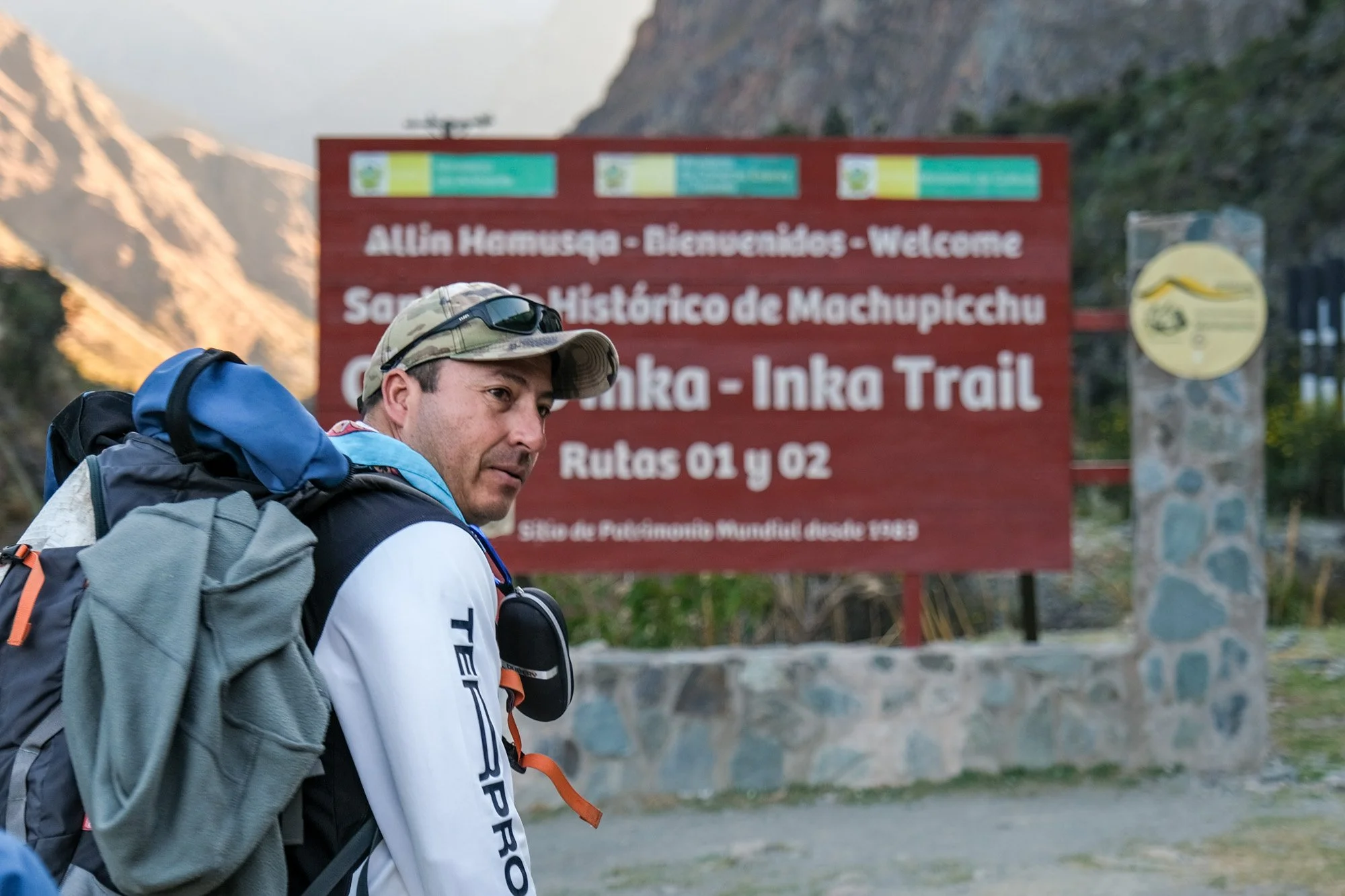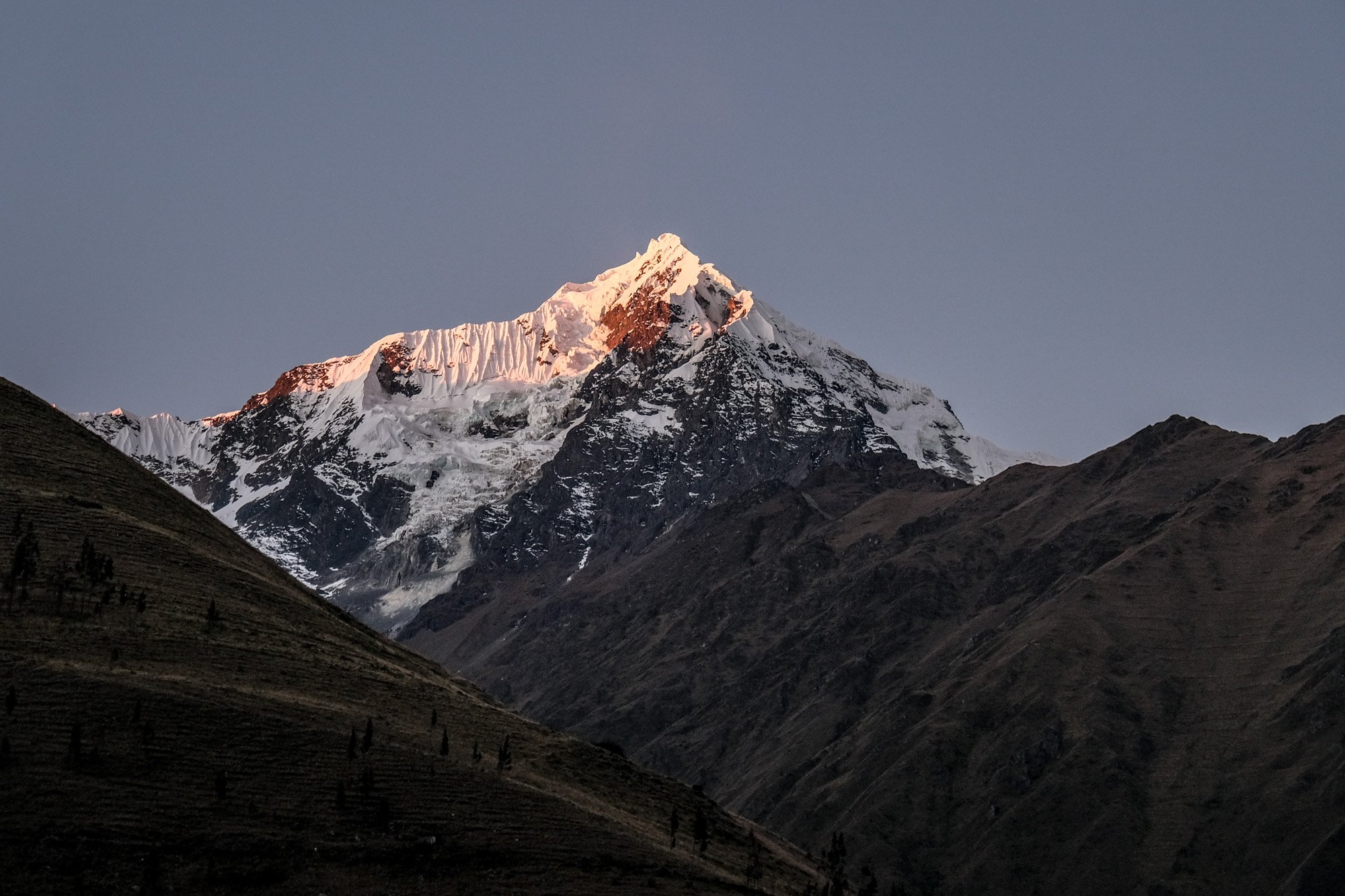Inca Trail: Day 1 - Cusco - Piscacucho
Our recent trip to Peru was entirely predicated on walking the Inka Trail (or Camino Inka). I first learned about the Inca Trail from our friends Ivy and Vince, who did the trek in 2014. After we completed our first Camino de Santiago last year, I have been thinking about taking another walking/trekking holiday. One obvious thought was walking a different Camino route, but it felt too soon. Another walk I looked into was to walk along the Hadrian Wall, the Roman frontier in Northern England. For about a month or two, I researched Hadrian Wall and relevant logistics in-depth.
By chance, I was browsing through Google Flights one day and noticed that flights to Lima were relatively affordable. Inca trails immediately came to mind. People would snatch up all the Inca Trail permits in previous years when the government released them. Trekking during the high season (between June and August) meant booking about a year in advance. For that reason, I always assumed it was too logistically challenging. Planning a year in advance for a hike just seemed a little excessive. So I was very much surprised to learn that there were still permits for the Inca Trail available less than two months out. It seemed very unusual.
It took a while to realize that permit availability was likely attributed to Peru’s political unrest at the beginning of the year. On 7 December 2022, President Pedro Castillo was ousted and arrested by the parliament on rather flimsy corruption charges. Castillo, an ethnic Andean, is immensely popular in central Peru. Most Andeans viewed his ouster as a coup d'état plotted by Lima’s political and business elites. Outraged, they staged large protests throughout Peru. Outside of Lima, the protests were particularly fierce in Cusco, the former capital of the Inca and a stronghold of indigenous Andeans.
For a few months, protestors forced the closure of Cusco Airport and railway links to Machu Picchu. With many tourists trapped in Peru, the government closed Machu Picchu and the Inca Trail for a few months. This political turmoil shocked the entire economy, the tourism sector in particular. Compared to just about everywhere else, Peru stands out as an outlier in tourism recovery in the post-pandemic world. I felt obligated to take this opportunity to take on this opportunity. I felt a little guilty about being a beneficiary of a national crisis.
Heeding the recommendation from Ivy and Vice, we decided to use the same operator: Aven Tours, which has since rebranded as Ecoinka. Among all the tour operators on the market, Ecoinka is among the most expensive at just over $1,000 per person. Parsing through the different operators could be a confusing experience. Almost all licensed tour companies had excellent online reviews and operated roughly similar itineraries. In the end, we felt good about the choice. Ecoinka was the only one operating a base camp at the start of the trailhead. That would allow us to avoid an early start from Cusco on the first day of the hike. We got to sleep a little and enjoy a nice hot shower at the camp before setting off in the morning.
Two days before the start of the trek, our assigned guide, Jhon, reached out on WhatsApp. He suggested meeting up at our hotel and providing a basic orientation. By coincidence, we took a guided tour of Rainbow Mountain the day before the start of the trek. It turned out that hiking a 16,000-foot mountain was not a great idea before setting off on the Inca Trail. Instead of helping with acclimating, the high elevation of Rainbow Mountain messed up Brian’s blood pressure. As we met Jhon at the hotel, I could see Brian was not in the best mental and physical shape.
Jhon went over the schedule for the first day during our orientation. We learned that there was just another hiker in our group. Jhon followed up on a list of essential items we must carry on the trail, including bug spray, Pepto-Bismol, toilet paper, and hand sanitizers. All these items reminded us that Inka Trail will be more rustic than Camino de Santiago. All the talk about diarrhea, insects, and chemical toilets further put Brian into unease and doubt. I hoped Brian would feel better the next day when we were due to depart Cusco.
Brian did not feel significantly better as we woke up the next day. But we decided to proceed with the tour and see how he might feel after spending at the base camp. At 2:30 pm., Jhon showed up at our hotel to pick us up. From Cusco, it was a two-hour drive in a private van. We met Chris, the other hiker joining us for this trek. It was weird that we had a full 15-person van for just the three of us. This luxury also did not come cheap as there was a $180 USD per person supplement since fewer than four people signed up for this start date.
Chris is from rural England but worked in London as a civil engineer. It did not take long for us to discover that he was an avid outdoorsman. This was the end of his three-week tour through Peru. So far, he had already hiked Colca Canyon and part of the Salkantay Trek. I could tell that Christ would probably be ahead of us for much of the Inca Trail. This is why I was hoping we had a bigger group. It would have taken a little pressure off me regarding keeping up with the group.
Our first stop was Ollantaytambo, traditionally the gateway to Machu Picchu and our favorite town in the Sacred Valley. The twined Inca sites here are among our favorites thus far on this trip. From Ollantaytambo, most visitors typically board the train to Augu Calientes and then take a shuttle bus to Machu Picchu. For us doing the trek, this was the last town to gather some last-minute supplies before heading to the base camp. Judging from the items on sale, the store is a one-stop shop for Inca Trail. Brian and I bought two small bottles of hand sanitizer and a couple of rain ponchos.
After a 10-minute stop, we rode the bus to the tiny village of Piscacucho. Piscacucho is home to the fabled 82 Km trailhead and the base camp where we stay for the night. From the end of the road, it was a quick three-minute walk to the Inca Trail checkpoint and the famous sign for Inca Trail. We had to pass the trailhead to get to the base camp and return in the morning for a proper check-in with the park ranger. It was fine since I could get a better picture of that sign in direct sunlight.
Just past the sign is a suspension bridge over the Urubamba River. From this point, it was a ten-minute hike on a dirt trail along the riverside cliff. This trail was a little steeper than I was expecting. Halfway into this short hike, Brian turned to me and said he was struggling a little. I instinctively felt that the Inca Trail may not be his best idea. However, I felt obligated to tell him that let’s see how he feels the next morning. For all we know, a good night of sleep may be what he needed!
Getting to the base camp was quite a relief. Jhon introduced the camp manager and showed us where we would stay for the night. Because of how slow the business was, the company gave us a complimentary upgrade from a tent under a thatch roof to a proper “tented hut.” These huts are meant for those paying for their premium package and come with an ensuite bathroom, electricity, and a king-size bed. The only part of the upgrade we did not enjoy would be the fitted sheets and duvet cover. Instead, we would sleep in our sleeping bags.
After settling in for a few minutes, we all gathered at the main lodge for dinner. This lodge is both impressive and cozy. It has all the creature comfort you could expect from a glamping experience. From the seating areas, there are spectacular views of the snowy peak of Apu Veronica and the soothing sound of the Urubamba River. We are all surprised that no other tour operators chose to have a base camp around here. Spending the night here before a big trek was a wonderful sanctuary.
After greeting our chef, Juan, we began our three-course dinner. Meals on the Inca Trails are legendary. Chefs and their assistants somehow churn out elaborate meals from limited ingredients and mobile kitchen tents. Of course, the chef had all the conveniences of a modern kitchen at the base camp. Nevertheless, we were all very impressed by the culinary creation. In particular, the pumpkin soup was divine. I personally am very much looking forward to all the meals on the trail. That said, there was something uneasy about being served on what is technically a camping trip. Personally, I think being served hot towels was just a little excessive.
Over dinner and cups of coca tea, Jhon talked to us about the history of Ecoinka. He had worked with Ecoinka for about fifteen years and had been an Inca Trail guide for about twenty years. I took this opportunity to ask Jhon about the history of the company and all the dirt on the tourism industry on the Inca Trail. Jhon was particularly diplomatic and did not wish to speak ill of others. But he did comment that tour operators here are like a mafia. With so many guides and porters working as freelancers, it is critical to maintain good relations with all the major players in the field. However, he did mention that the Ecoinka’s owners, Rick and Walter, both went to school in the United States and ran the business with a different sensibility. In particular, sustainability and community development seemed to be the ethos of the operation. Well, I was happy to be a judge of that for the next few days!
We also learned more about Jhon and his perspective on tourism in Peru and the Inca Trail in particular. He recounted his first Inca Trail in 1995, and it was not until 2005 that the government began to regulate and actively conserve the Inca Trail as a cultural heritage site. While he is happy to put those free-wheeling years behind him, it is clear the mistrust with the government in Lima runs high around here. The endemic corruption permeates all facets of Peru, including on the trail. For long-time guides like him, the ultimate goal was to revitalize not just this section to Machu Picchu but the entire network of the Inca Trail throughout the Andes. Interestingly, he looks at Camino de Santiago as a model for creating a sustainable model for safeguarding heritage.
The wake-up call tomorrow would be 6 am, just before sunrise. With breakfast scheduled for 6:30 am., we hoped to set off on the trail before seven. Collectively, we decided to head to bed early and savor the last night of creature comfort. It was a pleasant surprise to see how effective the solar-powered shower was. On the other hand, the rental sleeping bag we got was quite disappointing. It was clear that they were not properly washed. Brian and I were inexperienced enough to forget to pack sleeping bag liners. Well, we shall see how well we sleep tonight. Hopefully, a night in the tented hut was comfortable enough to relieve Brian’s altitude sickness.














